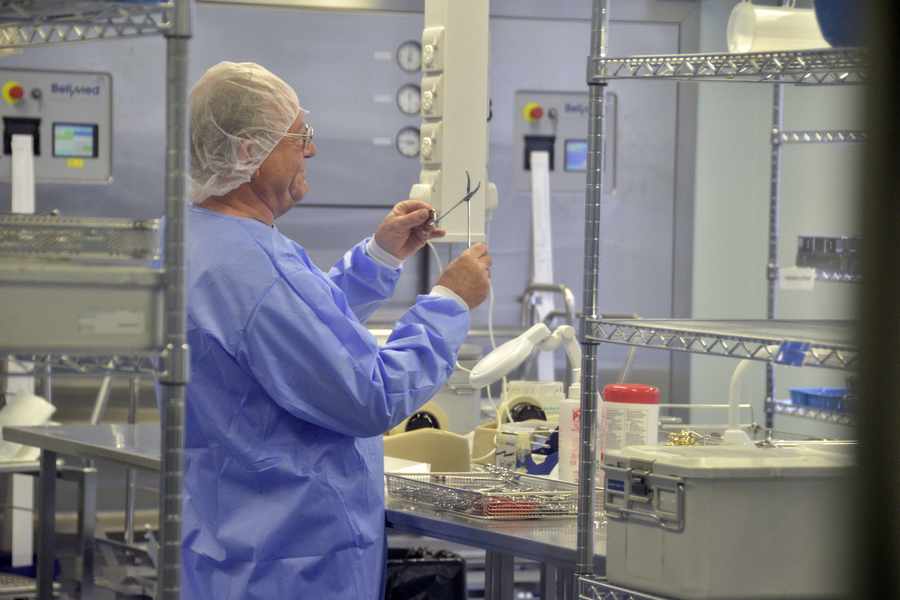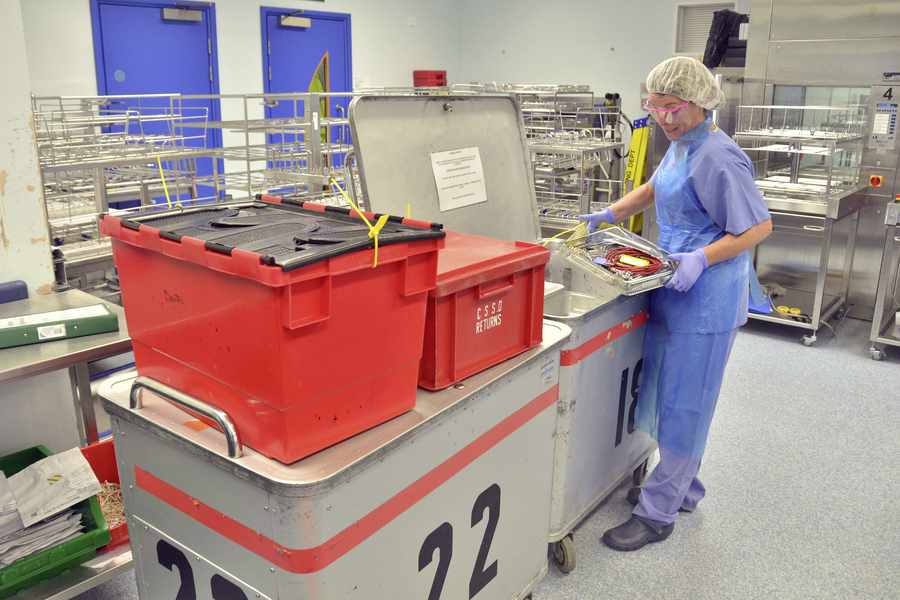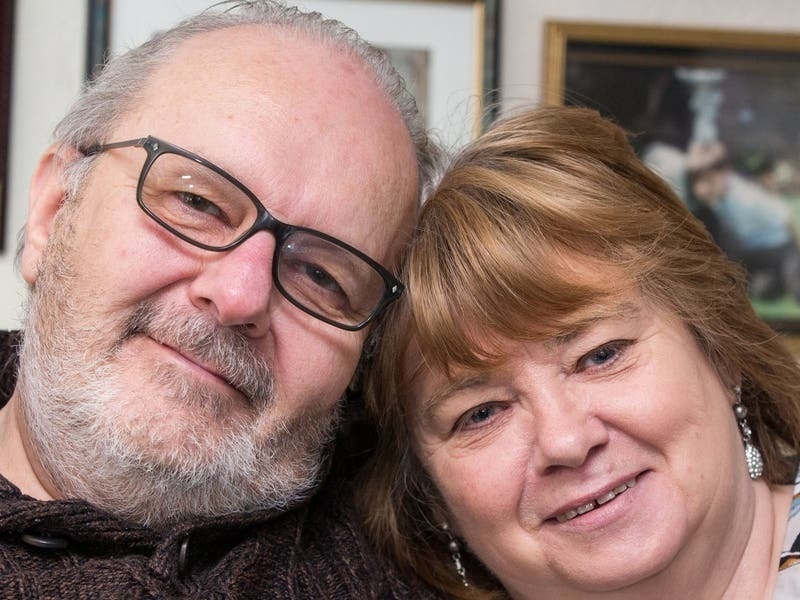Every day the correct filling of their large washer disinfectors is a vital step in the process of cleaning surgical equipment before returning it germ-free to the Hospital.
The service and its team of 17 staff work in a relatively small building in the back lanes of St Saviour, which hums and whirrs seven days a week to keep pace with the needs of clinics and theatres.

It uses a series of fail-safe checks to ensure that items, which can be delivered covered in blood, emerge around eight hours later sparklingly clean and ready to be reused.
Everything from bone mallets to forceps need cleaning and, in some cases, require special attention before being subject to the intense sterilisation process.
The unit is led by Sterile Services manager Anne Campbell-Fawcett, a former theatre nurse.
She explained that before a centralised unit was established 35 years ago, hospital wards were responsible for sterilising their own equipment.
Mrs Campbell-Fawcett said: ‘The aim of our department is to treat medical devices in such a way that they can be used safely on a patient, without endangering the patient or the user.
‘It is our responsibility to do this safely. Quality control for these processes is of the utmost importance. The decontamination process must always result in safe, sterile products.’
Daily testing of the machines involved takes place, as does testing of the sterilisation process. A team of engineers also carries out regular maintenance of the different devices, including an annual assessment in which they are stripped back and rebuilt.
Five times a day trucks arrive at the Sterile Services Unit to deliver containers carrying contaminated equipment from the Hospital and return with clean batches of goods that need to be sent back to operating theatres.
- Washer disinfectors: Double-doored, glass-panelled washing machines. Each unit costs £50,000. The washers use a small amount of PH neutral detergent and purified reverse osmosis water
- Sterilisers: High-temperature steam-cleaning boxes that use vacuum pressure before and after the sterilisation process. Each unit costs £75,000
- Sterilisation boxes: Specially made boxes in which items are placed before going into the main sterilisation unit. Vents allow air to be sucked out and steam to be pumped in so that every piece of equipment is processed
Those items arrive and are dispatched in secure aluminium carts, which operators unload and move to the washing room.
Items, which carry barcodes so they can be traced through the sterilisation process, are scanned and logged as they are unpacked.
In total they will be scanned 13 times as they move through the various stages.
Mrs Campbell-Fawcett explained that a key part of the procedure was to ensure that contaminated items and sterile items remained separate at all times.
To ensure this is maintained, items enter one part of the building and are loaded back onto trucks from another section.
She added: ‘Hospitals are places where there are people with all kinds of diseases.
They are a paradise for many types of germs.
With all these germs around the hospital is a place where you are likely to get contaminated.
With many patients being ill and weak the chances are high that contamination could cause a serious infection.’
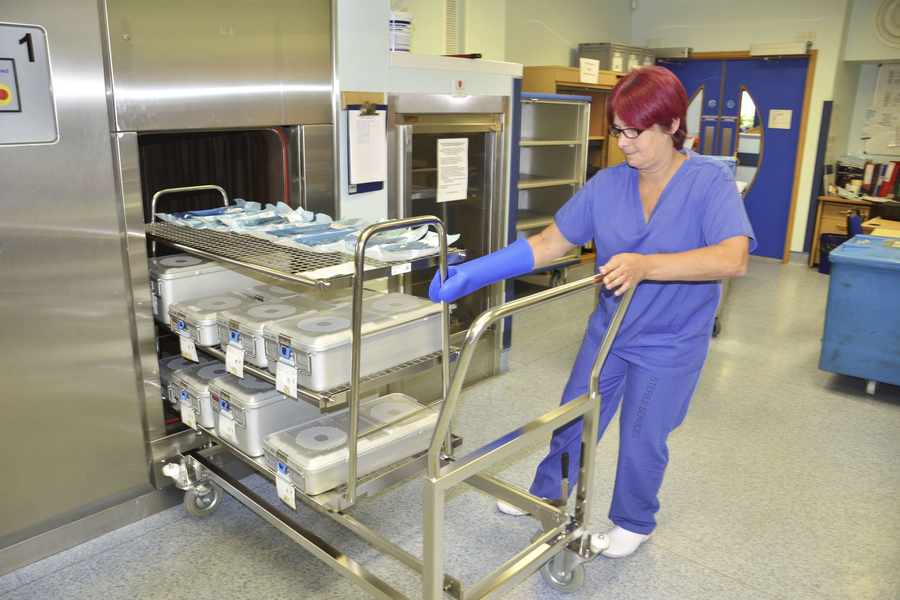
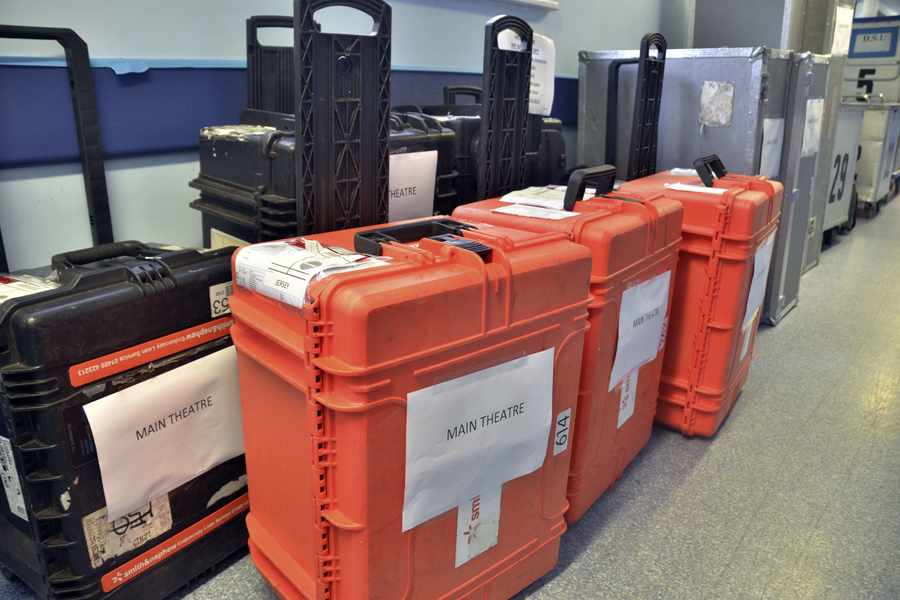
Most items are then loaded into special trays that are placed in multi-level cradles that will go into large washer disinfectors – the first stage of the washing process.
- 84p: The cost of washing a single item
- Eight hours: The time in which equipment can be sterilised
- 17: The number of staff who work at the unit
- 65,963: The number of trays of medical equipment processed by the unit in 2014
- 53,269 the number of supplementary items sterilised last year
- 8,318 the number of soft pack items sterilised in medical-grade pouches processed in 2014
More complicated pieces of equipment, including ‘canulated’ objects that have narrow holes through which water must be flushed, first need to be washed by hand and, in some cases, taken apart before they can be cleaned.
Items are then sent to the washer disinfectors – four large glass-fronted washing machines – that uses high-purity water and a small amount of PH neutral detergent during a 55-minute cycle that peaks at 90°C.
Batches then exit the machines from the other side and are taken into the main sterilisation room, where the equipment is packed into special containers and carts ready for the next stage of the process.
This room is kept at an elevated air pressure to ensure that it is not contaminated with outside material.
Items enter and exit through double-doored drop boxes and staff wear gowns in the area and sterilise their hands before entry, but do not wear gloves, as they need to maintain dexterity.
Mrs Campbell-Fawcett added that staff underwent around two years of in-house training on the job to build up the necessary skills.
It is essential that the cleaned items are kept dry once they reach the sterilisation room, where workers also inspect more complicated pieces under a microscope.
Once placed inside specially designed boxes or wrapped in medical-grade paper and plastic pouches, the items enter sterilising units that create a vacuum inside before steam is pumped in.
Following that cycle the carts are pulled out of the machines in a separate area, where a member of staff checks that sterilisation is complete, and left to cool before they are taken to trucks and returned to the Hospital.
Both the washer-disinfectors and the sterilisation units have automatic locking systems that prevent carts being moved on if a cycle has not been successful.
However, this is incredibly rare.
